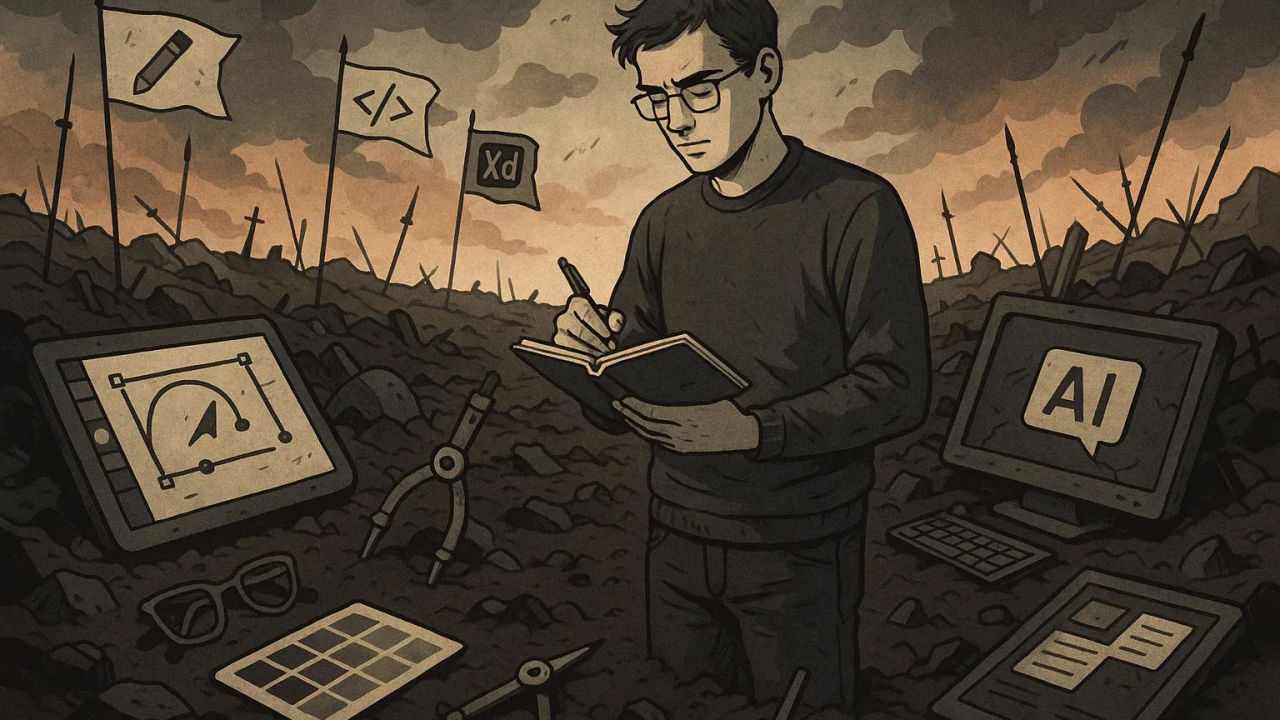Everyone’s asking the wrong question.
It’s not “will AI replace us?” It’s “what do I still do that can’t be abstracted away?”
A lot of the work we used to call skilled labour is now just a feature of someone else’s platform.
That’s not a threat. That’s just where we are.
So the real question is: who still matters when speed and automation become the default?
Let’s be blunt. Most people won’t be replaced just because AI is too powerful. They’ll be replaced because they never understood the value they actually bring.
The people who survive aren’t the ones with the cleanest commits, or the strongest Figma skills.
They’re the ones who operate above the system, not just inside it. The ones who adapt by thinking better, not just moving faster.
Because faster is already solved.
📌 What’s Inside
- The value isn’t in execution. It’s in interpretation.
- Rigid process doesn’t survive change. Judgment does.
- The edge isn’t in output. It’s in knowing what’s missing
- Most roles are already too shallow to survive
- Who gets kept when the team shrinks?
🧠The value isn’t in execution. It’s in interpretation
The ones who have a future are the ones who don’t wait for someone to hand them a ticket. They question whether the ticket even solves the right problem. They’ve outgrown execution as identity. Their value lives in their judgment: what to ship, what to skip, and how to know the difference.
These people are never just “a designer” or “a dev” or “a PM.” They’re fluent in how products actually work.
They understand what happens upstream of the brief, and what breaks if you push a bad solution downstream. They don’t isolate their work from the rest of the system. They know that friction in UX might come from a business model constraint, or that performance issues aren’t always fixed in code, sometimes they’re fixed in how you scope the feature in the first place.
They’re not necessarily the first to deliver. They’re the ones who prevent three rounds of rework by asking the right question early.
And no model is doing that for you.
⚙️Rigid process doesn’t survive change. Judgment does
The ones who have a future treat process like a tool: useful until it isn’t. They know when to push back and when to re-assess.
They adapt, not react.
They change tools without flinching. They treat AI like an extension of their brain, not a threat to their role.
They don’t rely on what they’ve memorised. They rely on how they think. They have the kind of flexibility that makes people trust them when the plan breaks.
🔍The edge isn’t in output. It’s in knowing what’s missing
The ones who have a future aren’t obsessed with what the tools can do. They’re obsessed with what the tools leave out.
Because every abstraction hides something. Every shortcut introduces a blind spot. And if nobody’s thinking about those gaps, the product becomes brittle, risky, unscalable.
We need people who can see what’s missing, and fill it.
These people spend their energy making sure the work is real, aligned, and doesn’t fall apart after launch.
They don’t build fast. They build right or they don’t build at all.
🧯Most roles are already too shallow to survive
Here’s the truth no one wants to say: most teams are already bloated with people doing work that’s been systematised.
Designers who polish pixels on top of systems they don’t understand. Developers who write glue code between libraries they didn’t choose. PMs who play traffic cop between teams instead of shaping product direction.
That work is disappearing. Or being absorbed. Or replaced by prompts.
But the thinking work, the judgment calls, the systems-level awareness that holds the product together when the roadmap is incoherent and the stakeholders don’t align?
That’s not going anywhere. In fact, it’s more valuable now than it’s ever been.

🚪Who gets kept when the team shrinks?
It’s not the most productive people who are kept when headcount drops.
It’s the ones who don’t think inside the system by default.
The people who stay aren’t the ones who follow the process perfectly.
They’re the ones who question whether the process even applies to the problem. They can step outside the defaults. Not to be difficult but because they’re paying attention.
They don’t just look at a design spec and ask “what needs to be built?” They ask why it exists in the first place, and what happens after it’s shipped.
They notice when a change to a flow introduces friction three steps downstream. They notice when a microcopy change introduces a legal implication. They notice when a metric moves in the wrong direction. Not because it’s their job to track it, but because they understand the system well enough to feel when something’s off.
They aren’t attached to titles. They don’t defend their lane. They operate across layers because they know that product is never cleanly separated.
Design decisions bleed into engineering. Engineering choices shape UX. UX flows impact business. Business shifts reframe strategy. It’s all connected and they move accordingly.
These people don’t wait for permission to think. They think because they can’t not.
They keep thinking critically, questioning what others take at face value.
And in a world full of tools that can generate, replicate, and accelerate anything, that kind of thinking becomes the rarest resource on the team.
That’s who you keep.
Not the loudest. Not the fastest. The ones who make fewer mistakes by seeing further ahead. The ones who quietly prevent chaos. The ones who still ask good questions when everyone else is just trying to look busy.
You don’t automate that.
You don’t outsource it.
You don’t lay it off.
You hold onto it… or you feel the cost later.
Subscribe on Substack⬇️
If you’ve found this content valuable, here’s how you can show your support.⬇️❤️
You might also like:
Share this article:




